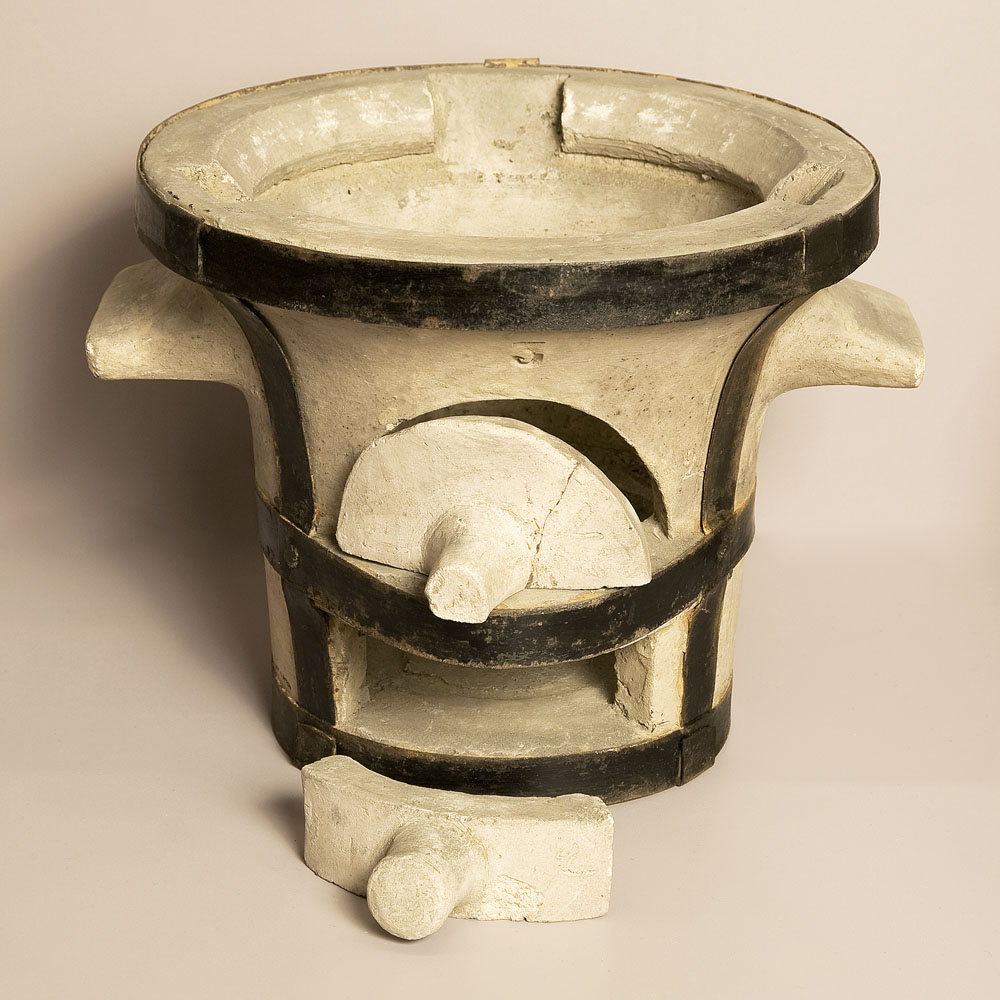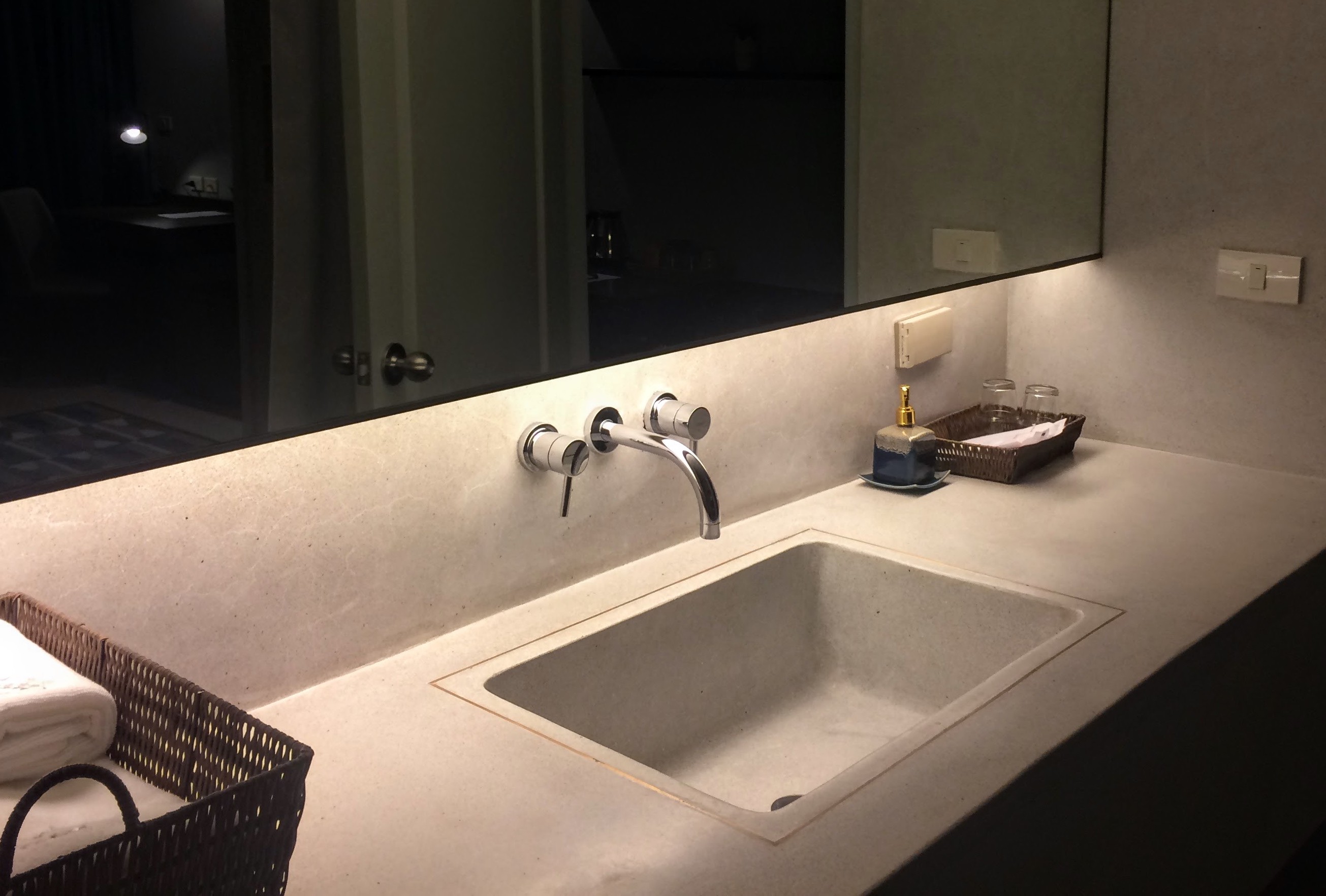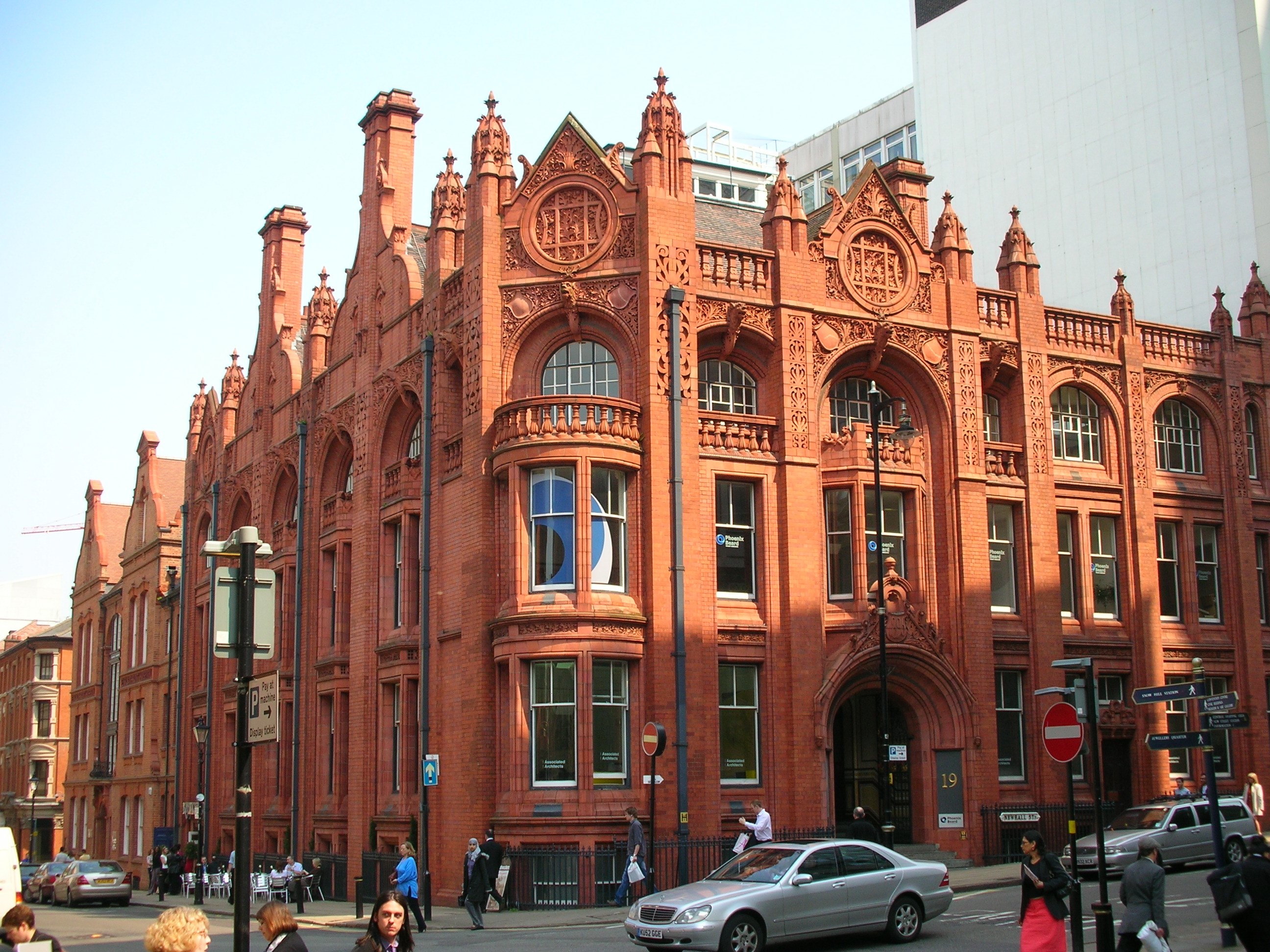|
Shaws Of Darwen
Shaws of Darwen is the common trading name of a manufacturer of fire clay sinks and general terracotta products. Founded by Arthur Gerard Shaw in 1897, he began manufacturing the rich clay deposits found at his father’s coal mines in Lancashire, UK. The company flourished until the outbreak of World War I in 1914. To maintain the business during wartime, acidware and ceramic conductors were manufactured for the government. During this time, Arthur Gerald Shaw patented the gas-fired clayware kiln. In 1919, the Shaws Gas Kiln Company formed, making and installing kilns in Great Britain, Europe and America. Apart from creating the standard belfast sink, Shaws also are involved in architectural terracotta - having created the Hackney Empire sign and working on the exterior terracotta structure of buildings such as Harrods in the UK and the Wrigley Building in Chicago (''City in a Garden''); I Will , image_map = , map_caption = Interactive Map ... [...More Info...] [...Related Items...] OR: [Wikipedia] [Google] [Baidu] |
Fire Clay
Fire clay is a range of refractory clays used in the manufacture of ceramics, especially fire brick. The United States Environmental Protection Agency defines fire clay very generally as a "mineral aggregate composed of hydrous silicates of aluminium (Al2O3·2SiO2·2H2O) with or without free silica." Properties High-grade fire clays can withstand temperatures of 1,775 °C (3,227 °F), but to be referred to as a "fire clay" the material must withstand a minimum temperature of .Minerals Zone, World Mineral Exchange. Retrieved 2011-6-23. Fire clays range from ''s'' to ''plastic fire clays'', but there are ''semi-flint'' and ''semi-plastic'' fire clays as well. Fire clays consist ... [...More Info...] [...Related Items...] OR: [Wikipedia] [Google] [Baidu] |
Lancashire
Lancashire ( , ; abbreviated Lancs) is the name of a historic county, ceremonial county, and non-metropolitan county in North West England. The boundaries of these three areas differ significantly. The non-metropolitan county of Lancashire was created by the Local Government Act 1972. It is administered by Lancashire County Council, based in Preston, and twelve district councils. Although Lancaster is still considered the county town, Preston is the administrative centre of the non-metropolitan county. The ceremonial county has the same boundaries except that it also includes Blackpool and Blackburn with Darwen, which are unitary authorities. The historic county of Lancashire is larger and includes the cities of Manchester and Liverpool as well as the Furness and Cartmel peninsulas, but excludes Bowland area of the West Riding of Yorkshire transferred to the non-metropolitan county in 1974 History Before the county During Roman times the area was part of the Bri ... [...More Info...] [...Related Items...] OR: [Wikipedia] [Google] [Baidu] |
World War I
World War I (28 July 1914 11 November 1918), often abbreviated as WWI, was one of the deadliest global conflicts in history. Belligerents included much of Europe, the Russian Empire, the United States, and the Ottoman Empire, with fighting occurring throughout Europe, the Middle East, Africa, the Pacific, and parts of Asia. An estimated 9 million soldiers were killed in combat, plus another 23 million wounded, while 5 million civilians died as a result of military action, hunger, and disease. Millions more died in genocides within the Ottoman Empire and in the 1918 influenza pandemic, which was exacerbated by the movement of combatants during the war. Prior to 1914, the European great powers were divided between the Triple Entente (comprising France, Russia, and Britain) and the Triple Alliance (containing Germany, Austria-Hungary, and Italy). Tensions in the Balkans came to a head on 28 June 1914, following the assassination of Archduke Franz Ferdin ... [...More Info...] [...Related Items...] OR: [Wikipedia] [Google] [Baidu] |
Patent
A patent is a type of intellectual property that gives its owner the legal right to exclude others from making, using, or selling an invention for a limited period of time in exchange for publishing an enabling disclosure of the invention."A patent is not the grant of a right to make or use or sell. It does not, directly or indirectly, imply any such right. It grants only the right to exclude others. The supposition that a right to make is created by the patent grant is obviously inconsistent with the established distinctions between generic and specific patents, and with the well-known fact that a very considerable portion of the patents granted are in a field covered by a former relatively generic or basic patent, are tributary to such earlier patent, and cannot be practiced unless by license thereunder." – ''Herman v. Youngstown Car Mfg. Co.'', 191 F. 579, 584–85, 112 CCA 185 (6th Cir. 1911) In most countries, patent rights fall under private law and the patent holder mus ... [...More Info...] [...Related Items...] OR: [Wikipedia] [Google] [Baidu] |
The Hackney Empire (152261787)
''The'' () is a grammatical article in English, denoting persons or things that are already or about to be mentioned, under discussion, implied or otherwise presumed familiar to listeners, readers, or speakers. It is the definite article in English. ''The'' is the most frequently used word in the English language; studies and analyses of texts have found it to account for seven percent of all printed English-language words. It is derived from gendered articles in Old English which combined in Middle English and now has a single form used with nouns of any gender. The word can be used with both singular and plural nouns, and with a noun that starts with any letter. This is different from many other languages, which have different forms of the definite article for different genders or numbers. Pronunciation In most dialects, "the" is pronounced as (with the voiced dental fricative followed by a schwa) when followed by a consonant sound, and as (homophone of the archaic ... [...More Info...] [...Related Items...] OR: [Wikipedia] [Google] [Baidu] |
Kilns
A kiln is a thermally insulated chamber, a type of oven, that produces temperatures sufficient to complete some process, such as hardening, drying, or chemical changes. Kilns have been used for millennia to turn objects made from clay into pottery, tiles and bricks. Various industries use rotary kilns for pyroprocessing—to calcinate ores, to calcinate limestone to lime for cement, and to transform many other materials. Pronunciation and etymology According to the Oxford English Dictionary, kiln was derived from the words cyline, cylene, cyln(e) in Old English, in turn derived from Latin ''culina'' ("kitchen"). In Middle English the word is attested as kulne, kyllne, kilne, kiln, kylle, kyll, kil, kill, keele, kiele. For over 600 years, the final "n" in kiln was silent. It wasn't until the late 20th century where the "n" began to be pronounced. This is due to a phenomenon known as spelling pronunciation, where the pronunciation of a word is surmised from its spelling an ... [...More Info...] [...Related Items...] OR: [Wikipedia] [Google] [Baidu] |
Sink
A sink is a bowl-shaped plumbing fixture for washing hands, dishwashing, and other purposes. Sinks have a tap (faucet) that supply hot and cold water and may include a spray feature to be used for faster rinsing. They also include a drain to remove used water; this drain may itself include a strainer and/or shut-off device and an overflow-prevention device. Sinks may also have an integrated soap dispenser. Many sinks, especially in kitchens, are installed adjacent to or inside a counter. When a sink becomes clogged, a person will often resort to using a chemical drain cleaner or a plunger, though most professional plumbers will remove the clog with a ''drain auger'' (often called a "plumber's snake"). History United States The washstand was a bathroom sink made in the United States in the late 18th century.Sinks ''The Old-House Journal''; Augu ... [...More Info...] [...Related Items...] OR: [Wikipedia] [Google] [Baidu] |
Architectural Terracotta
Architectural terracotta refers to a fired mixture of clay and water that can be used in a non-structural, semi-structural, or structural capacity on the exterior or interior of a building. Terracotta pottery, as earthenware is called when not used for vessels, is an ancient building material that translates from Latin as " baked earth". Some architectural terracotta is actually the stronger stoneware. It can be unglazed, painted, slip glazed, or glazed. A piece of terracotta is composed of a hollow clay web enclosing a void space or cell. The cell can be installed in compression with mortar or hung with metal anchors. All cells are partially backfilled with mortar. By the late 19th century the version with a ceramic glaze, namely glazed architectural terracotta became more popular. Chemistry Terracotta is made of a clay or silt matrix, a fluxing agent, and grog or bits of previously fired clay. Clays are the remnants of weathered rocks that are smaller than 2 microns. They ... [...More Info...] [...Related Items...] OR: [Wikipedia] [Google] [Baidu] |
Hackney Empire
Hackney Empire is a theatre on Mare Street, in the London Borough of Hackney. Originally designed by Frank Matcham it was built in 1901 as a music hall, and expanded in 2001. Described by ''The Guardian'' as ‘the most beautiful theatre in London’ it is an Arts Council England National Portfolio Organisation. History Hackney Empire is a grade II* listed building. The theatre was built as a music hall in 1901, designed by the architect Frank Matcham. Architecture scholar Nicholas Pevsner described the "splendid Hackney Empire, with its ornate terracotta exterior and sumptuous seventy-seven galleried auditorium" as a key example of Victorian and Edwardian architecture. There is a statue of Thalia, the Greek muse of comedy, on the roof of the theatre: this was removed in 1979, but later reinstalled. Charlie Chaplin, W. C. Fields, Stanley Holloway, Stan Laurel, Marie Lloyd and Julie Andrews all performed there, when the Hackney Empire was a music hall. ATV bought the theatre ... [...More Info...] [...Related Items...] OR: [Wikipedia] [Google] [Baidu] |
Harrods
Harrods Limited is a department store located on Brompton Road in Knightsbridge, London, England. It is currently owned by the state of Qatar via its sovereign wealth fund, the Qatar Investment Authority. The Harrods brand also applies to other enterprises undertaken by the Harrods group of companies, including Harrods Estates, Harrods Aviation and Air Harrods. The store occupies a site and has 330 departments covering of retail space. It is one of the largest and most famous department stores in the world. The Harrods motto is ''Omnia Omnibus Ubique'', which is Latin for "all things for all people, everywhere". Several of its departments, including the Seasonal Christmas department and the Food Halls, are well known. Harrods was also a founder of the International Association of Department Stores in 1928, which is still active today, and remained a member until 1935. Franck Chitham, Harrods' president at the time, was president of the Association in 1930. History In 1 ... [...More Info...] [...Related Items...] OR: [Wikipedia] [Google] [Baidu] |
Wrigley Building
The Wrigley Building is a skyscraper located at 400–410 North Michigan Avenue on Chicago's Near North Side. It is located on the Magnificent Mile directly across Michigan Avenue from the Tribune Tower. Its two towers in an elaborate style were built between 1920 and 1924 to house the corporate headquarters of the Wrigley Company. Its bright white facade is covered in terra cotta. History When ground was broken for the Wrigley Building in 1920, there were no major office buildings north of the Chicago River. The Michigan Avenue Bridge, which spans the river just south of the building, was still under construction. The land was selected by chewing gum magnate William Wrigley Jr. for the headquarters of his company. The building was designed by the architectural firm of Graham, Anderson, Probst & White using the shape of the Giralda tower of Seville's Cathedral combined with French Renaissance details. The south tower was completed in September 1921 and the north tower in May 1 ... [...More Info...] [...Related Items...] OR: [Wikipedia] [Google] [Baidu] |
Chicago
(''City in a Garden''); I Will , image_map = , map_caption = Interactive Map of Chicago , coordinates = , coordinates_footnotes = , subdivision_type = Country , subdivision_name = United States , subdivision_type1 = State , subdivision_type2 = Counties , subdivision_name1 = Illinois , subdivision_name2 = Cook and DuPage , established_title = Settled , established_date = , established_title2 = Incorporated (city) , established_date2 = , founder = Jean Baptiste Point du Sable , government_type = Mayor–council , governing_body = Chicago City Council , leader_title = Mayor , leader_name = Lori Lightfoot ( D) , leader_title1 = City Clerk , leader_name1 = Anna Valencia ( D) , unit_pref = Imperial , area_footnotes = , area_tot ... [...More Info...] [...Related Items...] OR: [Wikipedia] [Google] [Baidu] |


.png)


.jpg)
